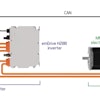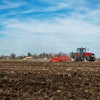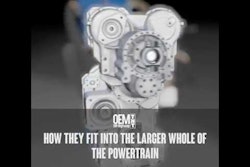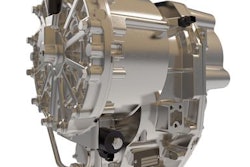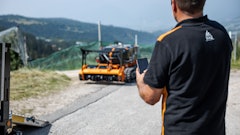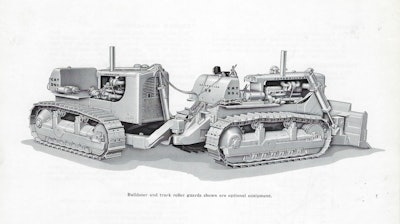
As discussed in the previous column, efficient pushloading of an open bowl scraper often required more power than could be provided by one tractor. A more powerful tractor was an option, but when power requirements exceeded what was commercially available, most contractors did not have the means to customize. Besides, more powerful tractors tended to be larger, leading to logistical problems, such as being too wide to move behind the scraper without pushing dirt from the sides of the cut, and being too large and heavy for transport without disassembly.
Instead, two or more tractors (five is the most known to have been used) could be lined up behind the scraper. But while the scraper would be loaded more quickly, there were drawbacks. A lot of coordination between operators was required, and the scraper and the lead tractor could end up waiting for the second. Congestion in the pit increased markedly as multiple tractors, instead of just one, required maneuvering back into position for another push. Also, each tractor had its own costs, including the operator; so the cost of pushloading one scraper multiplied more or less by the number of tractors pushing it.
R. A. “Buster” Peterson had the answer. He had established an outstanding record for California Caterpillar dealer Peterson Tractor & Equipment Company, designing attachments and modifications for Cat equipment, as well as shop equipment and tooling. One of his modifications was to combine two Cat D8s into one tractor in the late 1940s by putting two engines and drivetrains on one set of crawlers. It had plenty of power, but ran afoul of the dimensional issues by being doubly wide.
In the early 1960s, he came up with a different approach to the problem. His idea was eminently logical – instead of building one big tractor, put two smaller (relatively speaking) tractors together to make a big one. He coupled two Cat D9Gs together end-to-end by means of a ball joint with a down-pressure hydraulic cylinder on the front of the second tractor to increase traction from one tractor to the other, or float the rear tractor to smooth the ride of the first. Both were operated from the lead tractor through synchronized controls.
The concept provided some 760 hp (566.3 kW) under control of one operator, all available at once instead of waiting for a second pusher, and it solved the problems of multiple pushers in the cut, as the Dual D9 could return across rough ground for another push faster than two separate machines because of the weight transfer. Finally, the single operator would be less fatigued because of less stress and a smoother ride.
The idea caught on, and a number of earthmoving contractors ordered new sets of Dual D9s for heavy pushloading applications, or the components to assemble their own. In the late 1960s, Anaconda Copper amassed no less than 13 Dual D9s – which were also known as Quad D9s or Quad-Tracks – to pushload 52 Cat scrapers during overburden removal at its Twin Buttes Mine near Green Valley, AZ. Cat itself bought the rights to the design in 1968 and continued production into the D9H era. They were finally discontinued when the D10 was introduced.
The Historical Construction Equipment Association (HCEA) is a 501(c)3 non-profit organization dedicated to preserving the history of the construction, dredging and surface mining equipment industries. With approximately 4,000 members in 25 countries, its activities include publication of a quarterly educational magazine, Equipment Echoes; operation of National Construction Equipment Museum and archives in Bowling Green, OH; and hosting an annual working exhibition of restored construction equipment.
The 2017 show will be November 3-5 at the Ederville Train and Tractor Show, Carthage, North Carolina, USA. Individual memberships within the USA and Canada are $35 for 1 year, $65.95 for 2 years and $99.95 for 3 years, and $45.00 US elsewhere.
HCEA seeks to develop relationships in the equipment manufacturing industry, and offers a college scholarship for engineering and construction management students. Information is available at www.hcea.net, by calling 419-352-5616 or emailing [email protected].
